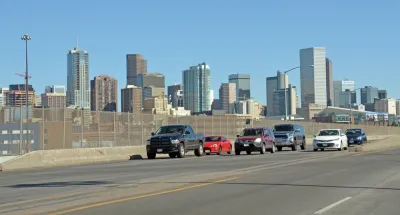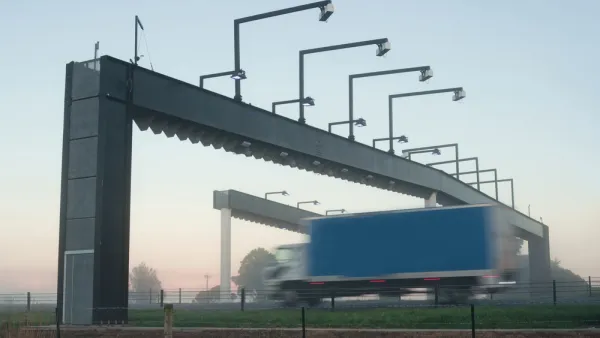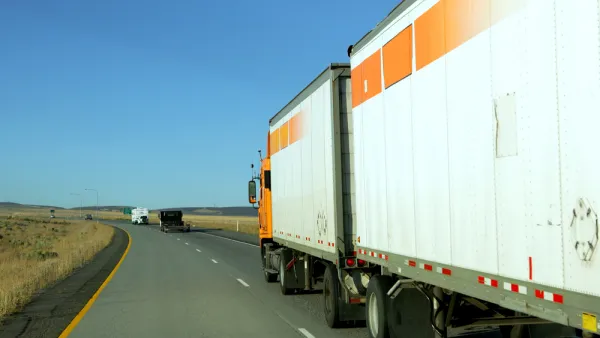Most of the 150 volunteers who participated in the 4-month program were pleased. Simulated invoices charged for vehicle-miles traveled after gas taxes paid were credited. Three technologies, including one with GPS, were available to record mileage.

"Several issues emerged from the broadly positive results, including privacy concerns stemming from the program’s use of GPS, the challenge of collecting revenue from out-of-state motorists traveling through Colorado and the appearance of punishing drivers of electric or fuel-sipping vehicles," reports John Aguilar for The Denver Post on Dec. 12.
In order to get closer to making a pitch for implementation, we have to answer more questions,” said Tim Kirby, a planning manager with the Colorado Department of Transportation. “We’re at the beginning stages of research.”
The final report, released by CDOT on Dec. 12, is available with separate links for the executive summary, fact sheet, and other documents on the Road Usage Charge (RUC) homepage. The pilot began in December 2016 and ran through April of this year.
The good news is that the initial feedback from the study was generally positive
"It comes closest to having the people who are actively impacting the system compensating for that use,” said Kathy Gilliland, a Greeley resident and pilot program participant who reported her mileage to CDOT using a GPS-enabled device plugged into her 1999 Toyota Camry. “It was outstanding — you plugged it in and just forgot about it.”
Participants could also opt for a dongle without GPS to plug into their onboard diagnostic (OBD) system, or opt to "snap a picture of their odometer and submit it online," as The Denver Post's editor, Chuck Plunkett, did. "The Tinfoil Hat Solution worked like a dream, but it was work," wrote Plunket on Dec. 15. "The other two versions did most of the work for you."
CDOT launched the program to investigate a sustainable source of road funding. The 22-cents per gallon state gas tax, unchanged since 1991, is not adjusted for inflation, unlike many state gas taxes. As vehicle fuel efficiency increases due to increasing fuel economy and emission standards, and sales of electric vehicles (EVs) that pay no or little gas taxes, increase as expected in the future, many state departments of transportation foresee huge revenue shortfalls.
“We’re looking at our revenue situation, and we’re falling off a cliff," said CDOT's Kirby.
CDOT estimates that it will see a $1 billion-a-year budgetary shortfall for the next 10 years, largely because an expected decline in gas taxes.
"Our nation’s system for funding its roads is dumb and only getting dumber," opined Plunket.
"Our maddeningly stubborn reliance on a tired old gasoline tax is failing and can’t be fixed. Embrace the RUC."
Also released this month was the final report for the 9-month California Road Charge Pilot Program involving 5,000 participants. Unlike the CDOT program, the pilot resulted from legislation. Next steps include investigating revenue collection using point-of-sale technology at gas pumps and EV chargers.
Hat tip to American Road & Transportation Builders Association (ARTBA).

National Parks Layoffs Will Cause Communities to Lose Billions
Thousands of essential park workers were laid off this week, just before the busy spring break season.

Retro-silient?: America’s First “Eco-burb,” The Woodlands Turns 50
A master-planned community north of Houston offers lessons on green infrastructure and resilient design, but falls short of its founder’s lofty affordability and walkability goals.

Delivering for America Plan Will Downgrade Mail Service in at Least 49.5 Percent of Zip Codes
Republican and Democrat lawmakers criticize the plan for its disproportionate negative impact on rural communities.

Test News Post 1
This is a summary

Test News Headline 46
Test for the image on the front page.

Balancing Bombs and Butterflies: How the National Guard Protects a Rare Species
The National Guard at Fort Indiantown Gap uses GIS technology and land management strategies to balance military training with conservation efforts, ensuring the survival of the rare eastern regal fritillary butterfly.
Urban Design for Planners 1: Software Tools
This six-course series explores essential urban design concepts using open source software and equips planners with the tools they need to participate fully in the urban design process.
Planning for Universal Design
Learn the tools for implementing Universal Design in planning regulations.
EMC Planning Group, Inc.
Planetizen
Planetizen
Mpact (formerly Rail~Volution)
Great Falls Development Authority, Inc.
HUDs Office of Policy Development and Research
NYU Wagner Graduate School of Public Service




























